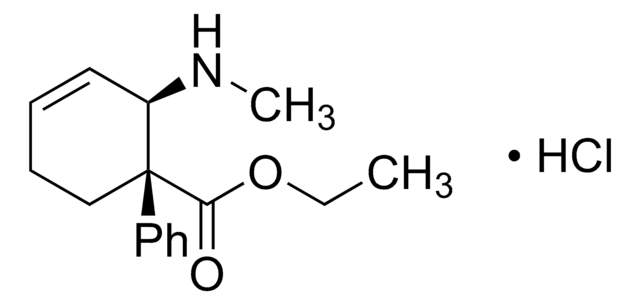E5264
2-Ethylidene-1,5-dimethyl-3,3-diphenylpyrrolidine perchlorate
analytical standard, for drug analysis
About This Item
Recommended Products
grade
analytical standard, for drug analysis
Quality Level
drug control
regulated under CDSA - not available from Sigma-Aldrich Canada
technique(s)
HPLC: suitable
gas chromatography (GC): suitable
application(s)
forensics and toxicology
veterinary
format
neat
storage temp.
2-8°C
SMILES string
OCl(=O)(=O)=O.C\C=C1/N(C)C(C)CC1(c2ccccc2)c3ccccc3
InChI
1S/C20H23N.ClHO4/c1-4-19-20(15-16(2)21(19)3,17-11-7-5-8-12-17)18-13-9-6-10-14-18;2-1(3,4)5/h4-14,16H,15H2,1-3H3;(H,2,3,4,5)/b19-4-;
InChI key
CBNJWAYHGKHAFJ-YOJQKEKBSA-N
General description
Application
Storage Class
11 - Combustible Solids
wgk_germany
WGK 3
flash_point_f
Not applicable
flash_point_c
Not applicable
ppe
Eyeshields, Gloves, type N95 (US)
Certificates of Analysis (COA)
Search for Certificates of Analysis (COA) by entering the products Lot/Batch Number. Lot and Batch Numbers can be found on a product’s label following the words ‘Lot’ or ‘Batch’.
Already Own This Product?
Find documentation for the products that you have recently purchased in the Document Library.
Our team of scientists has experience in all areas of research including Life Science, Material Science, Chemical Synthesis, Chromatography, Analytical and many others.
Contact Technical Service